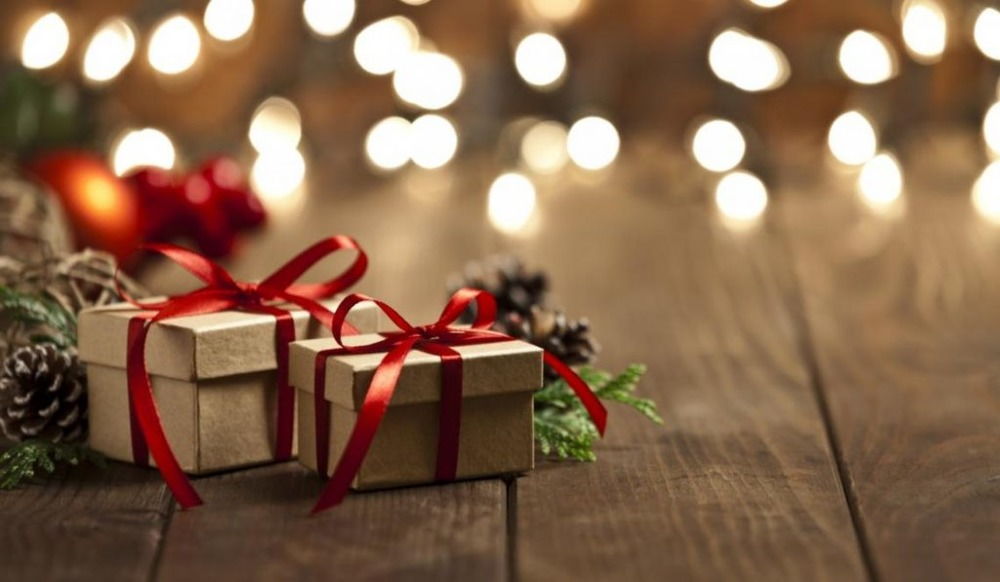
Christmas in Spain is a special time of year when the whole country is filled with an atmosphere of joy and festive spirit. How beautiful Spain is at this time of year!
On this holiday of goodness and light, children write letters to Papa Noel (Spanish Santa Claus) telling him about their achievements during the year and what they want to receive as a Christmas present.
And then, on Christmas Eve, they leave biscuits and a glass of milk for Pope Noel, and a carrot, it is imperative to put a carrot for the tired reindeer! After all, they've been delivering presents all night and they need to be refreshed!
The three main holidays celebrated by Spaniards during this period are Christmas (Navidad), New Year (Año Nuevo) and Los Reyes Magos (The Day of the Magician Kings).
Traditions of celebrating Christmas and New Year in Spain
Preparations for the country's most important holidays start at the beginning of November: the streets of towns and cities, both small and large, gradually turn into a decorated scenery for Christmas films, where Christmas music is played and people buy presents for their relatives and friends in a merry bustle.
Christmas Belen in Spain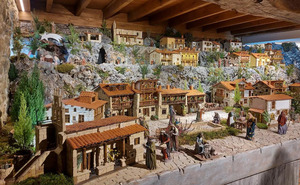
In addition to the decorated streets and squares, there are Christmas whitewashes near churches and in public places.
They represent picturesque scenes of the birth of Jesus Christ, as well as the life, labour and everyday life of people in those distant times.
We didn't know anything about it when we first moved in, and we were surprised and delighted by these installations: it was very interesting to look at the many scenarios depicted on Belen, especially when these figures moved, such as a woman putting an apple in a bag or a child picking up a branch from the floor.
Some of the largest and most famous belenos are exhibited in Madrid, Barcelona and Seville.
These exhibitions attract thousands of visitors and are an important part of the Christmas festivities.
Traditions of celebrating Christmas in Spain
Christmas celebrations in Spain begin on 22 December with the El Gordo lottery, which means ‘The Fat Man’.
This is one of the biggest events of the year, with millions of people taking part.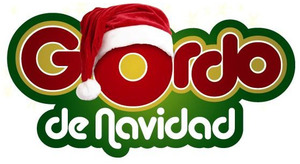
On the evening of 24 December, Spaniards gather for ‘Nochebuena’, which translates to ‘Holy Night’, and celebrate with their families.
¡Feliz Navidad! ¡Felices fiestas! -these words are heard on all sides during this holy time.
Traditional dishes in Spain at Christmas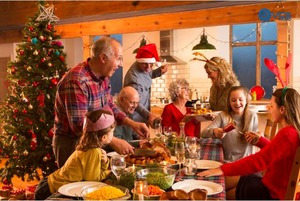
The traditional Christmas dinner includes a range of dishes that vary from region to region.
However, mariscos, the seafood that Spaniards love in all forms, remain an invariable part of the festive table.
And what's more, we all love prawns, squid, octopus, mussels..
Mariscos are most often served as an appetiser with a glass of cava - champagne.
Jamon is also always on the table as an appetiser.
But only the most prestigious varieties - jamon iberico and jamon serrano - it's Christmas!
As for the main hot delicacies, just like us, Spanish families have passed down the recipes for Christmas dishes from generation to generation.
The Christmas table is usually headed by meat: suckling pig, lamb, stuffed pork or turkey. Potatoes, fresh vegetables and traditional sauces are served on the side.
The meal ends with a variety of desserts, including turron, polvoron and mantecados - shortbread biscuits.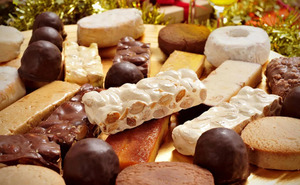
A popular Christmas tradition and a major part of Christmas is the ‘Misa del Gallo’, or midnight mass, which appropriately takes place at midnight. Families attend church to celebrate Christmas in prayer and song.
New Year traditions in Spain
Spain is a country of colourful traditions and unforgettable holidays, and New Year's Eve is no exception.
New Year celebrations in Spain are filled with unique customs that make this moment special and memorable for both locals and tourists.
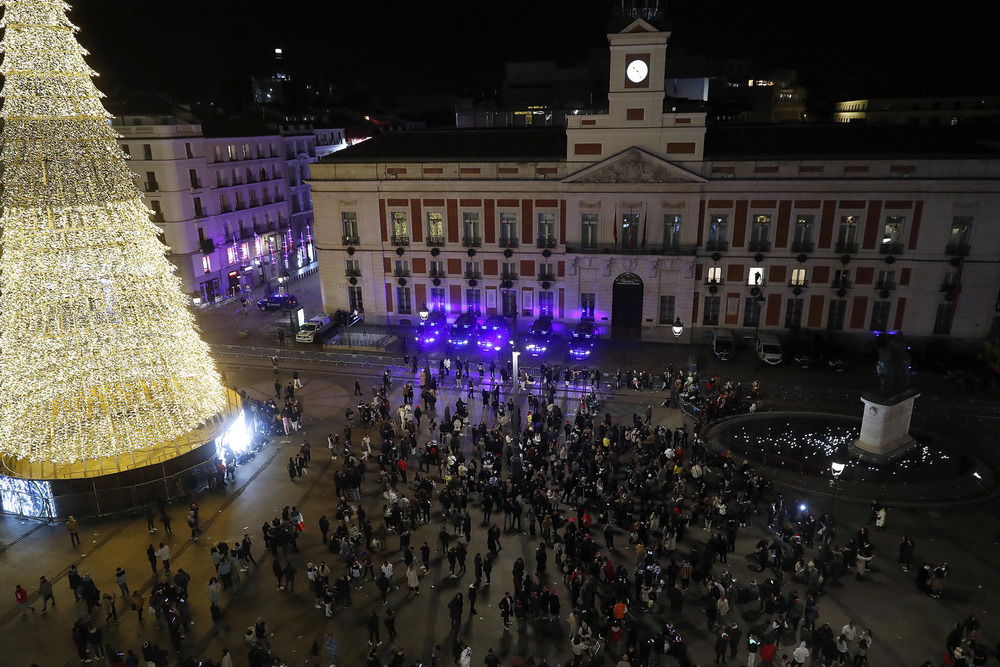
In Spain's major cities, such as Madrid, Barcelona and Seville, New Year's celebrations are accompanied by large street events.
The most important of these take place in Madrid's Puerta del Sol and Barcelona's Plaza Catalunya, where thousands of dressed-up people gather to celebrate the old year and the new.
The cheerful atmosphere, the New Year's cotillion, fireworks, music and mass dancing make this an unforgettable celebration.
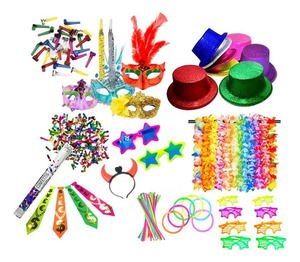
What is a New Year's cotillion, you may ask. Or not.
But while we're on the subject of New Year's Eve customs, a cotillion is a traditional set of party accessories that are meant to provide extra cheer on New Year's Eve
On our first New Year's Eve here in Spain, it really surprised us when we arrived in the main square of our town and were presented with this kit and a bottle of cava with 12 grapes.
And this is the most important tradition of New Year's Eve in Spain!
With each stroke of the clock at midnight, one grape must be eaten to make the next year a successful and happy one.
This custom is known as ‘Las doce uvas de la suerte’ (Twelve grapes of good luck).
Originating in the early 20th century, this custom quickly became an integral part of New Year's celebrations in all regions of the country.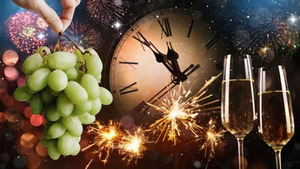
The Day of the Magic Kings in Spain (Los Reyes Magos)
It is one of the most colourful and anticipated holidays in Spain, especially for children.
It is traditionally celebrated on the night of 5 to 6 January.
On this day, children receive gifts from the three wise men, or Magi, who followed the Star of Bethlehem to worship the baby Jesus.
Their names were Melchior, Gaspar and Balthazar. The Magi were wise men who brought gifts to the baby Jesus: gold, frankincense and smyrna.
Since then, this day has symbolised the display of generosity and reverence and the end of the Christmas period.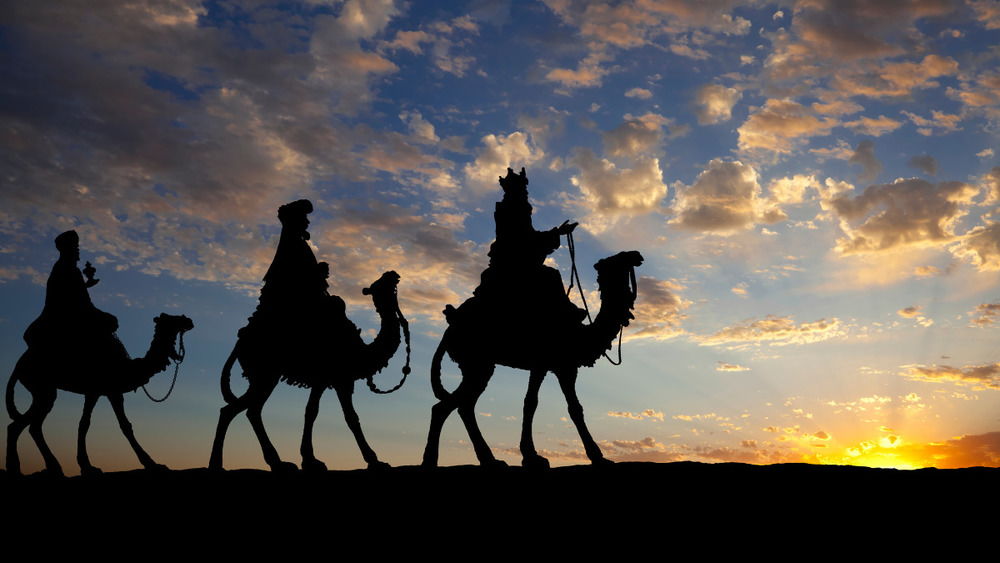
Traditions and customs of the holiday
In Spain, this holiday is full of traditions and colourful events. Especially worth noting are the following customs:
Cavalcade de Reyes (Cavalcade of the Magi)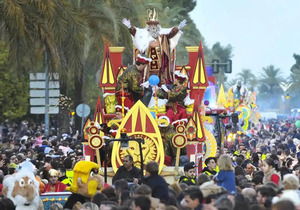
One of the most impressive aspects of the celebrations in Spain is the Cavalcade of the Magi, a colourful parade that takes place on 5 January.
In many towns and villages in Spain, the Magi ride through the streets on decorated platforms, throwing sweets and candy to children.
This spectacle attracts thousands of spectators and is filled with an atmosphere of magic.
Our children, when they were young, looked forward to this particular holiday!
Gifts from the Magi Kings
According to Spanish tradition, it is the Magi Kings, not Papa Noel, who bring gifts to the children.
On the eve of the holiday, the children write letters to the Kings telling them about their wishes and good deeds.
On the morning of 6 January, the children find the presents left by the Magi.
But Papa Noel is also important here, and many children here in Spain are given presents on both Christmas and Magician Kings Day.
Roscon de Reyes (Ring of Kings)
Roscon de Reyes is a traditional pie that is an integral part of the festivities.
It is a sweet yeast ring decorated with candied fruit symbolising the jewels of the royal crown.
A figurine and a bean are hidden inside the cake: whoever finds the figurine becomes ‘king’ for the day, and whoever discovers the bean must buy a roscón for the following year.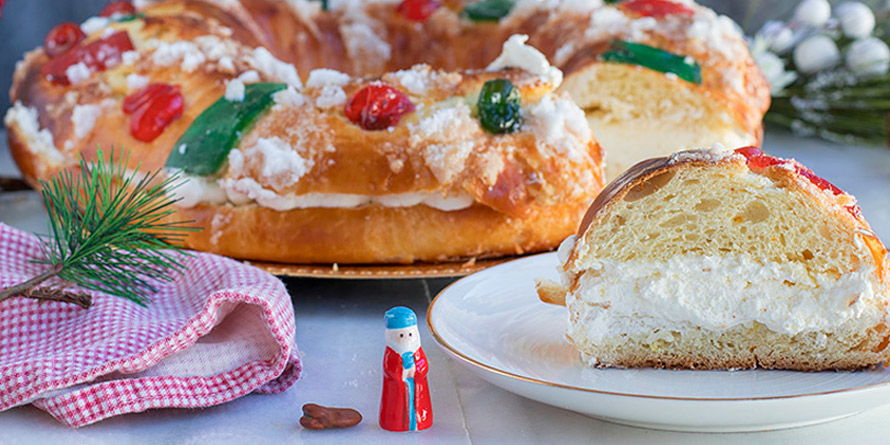
New Year celebrations in Spain are a time of joy, hope and fulfilment.
No matter where you choose to celebrate this holiday, the Spanish traditions and atmosphere are guaranteed to make it extraordinary.
Be prepared to support the most cheerful and unusual customs, and may the New Year bring you luck and happiness!


 English
English  Español
Español  Русский
Русский